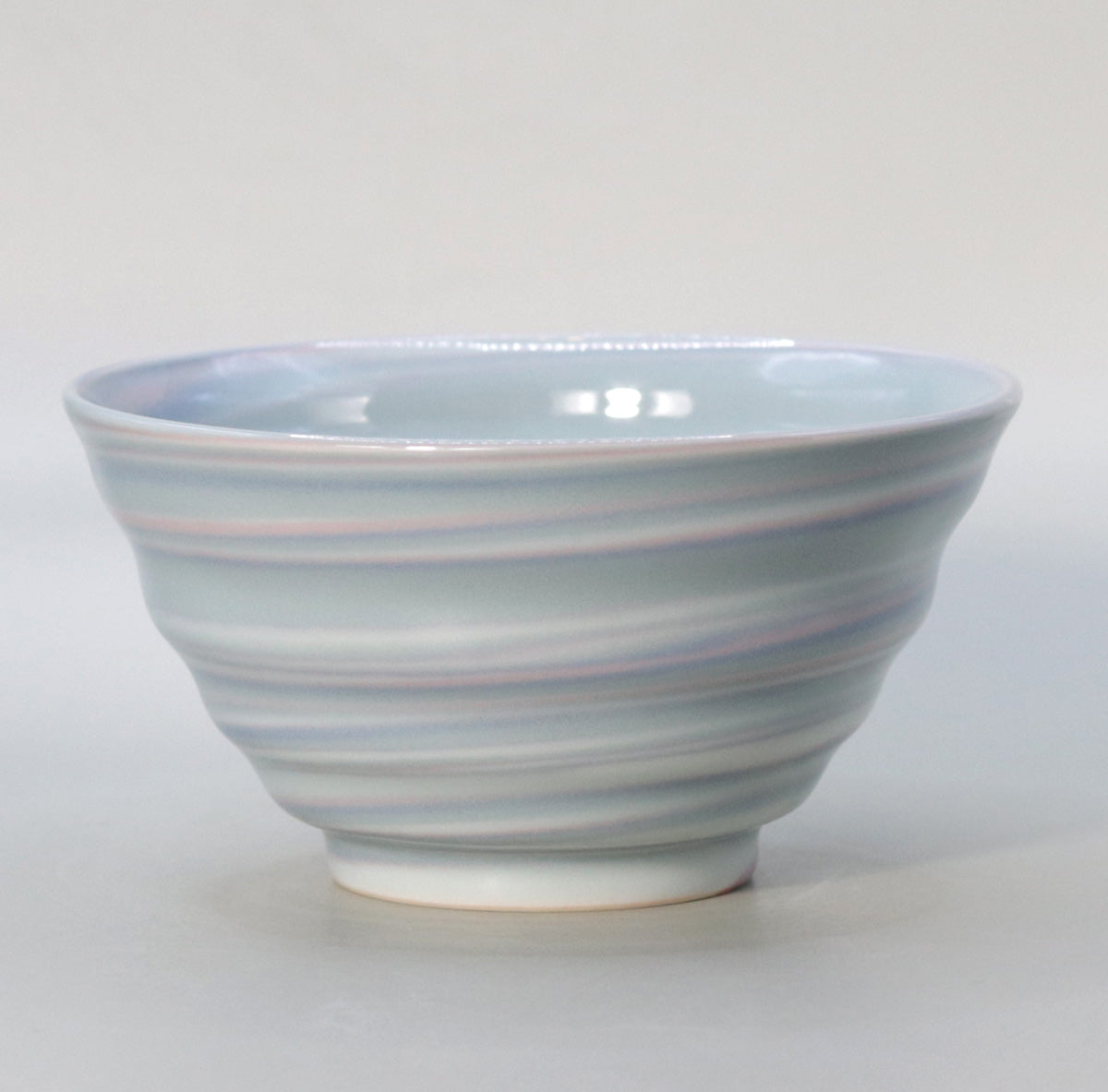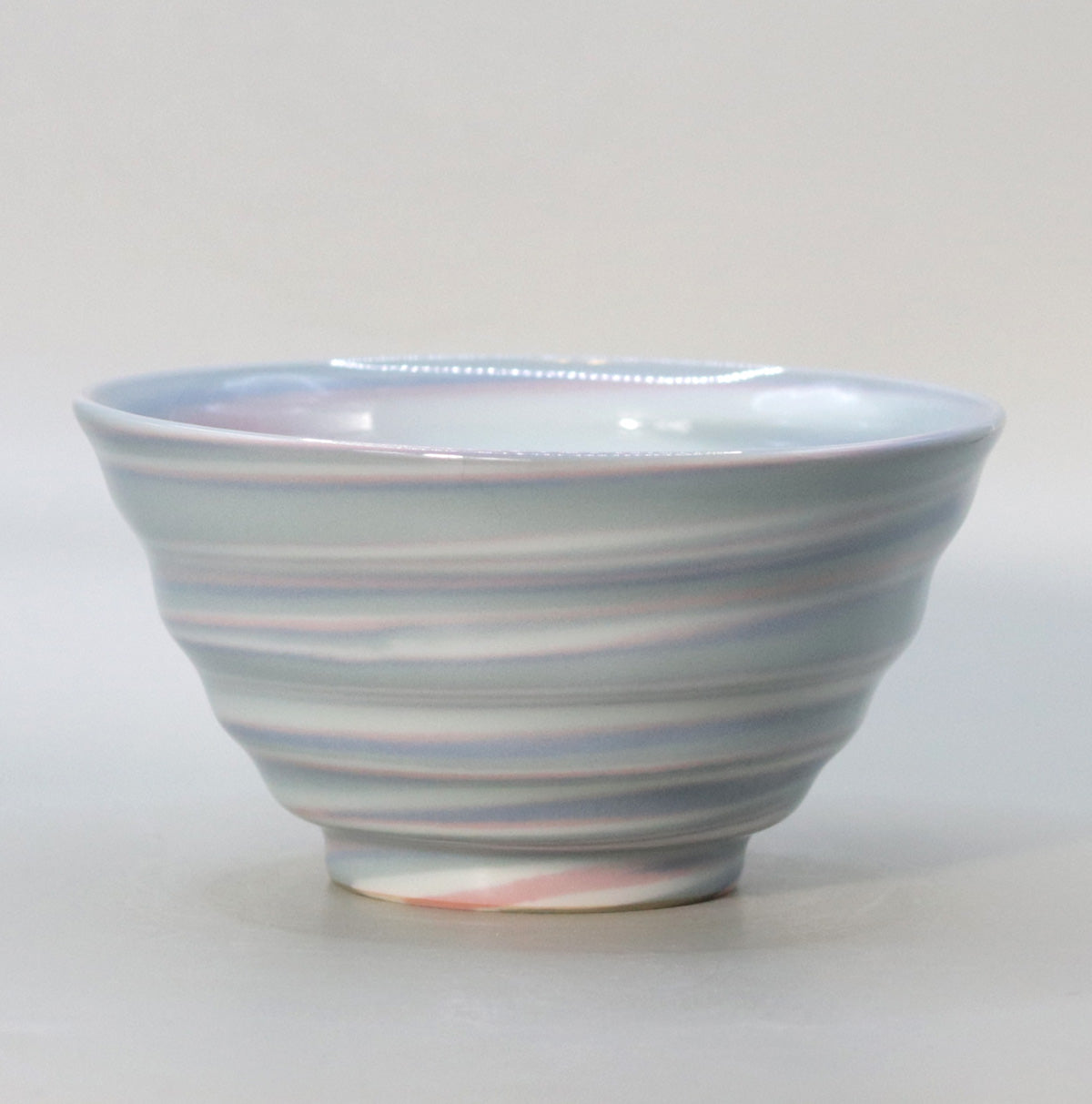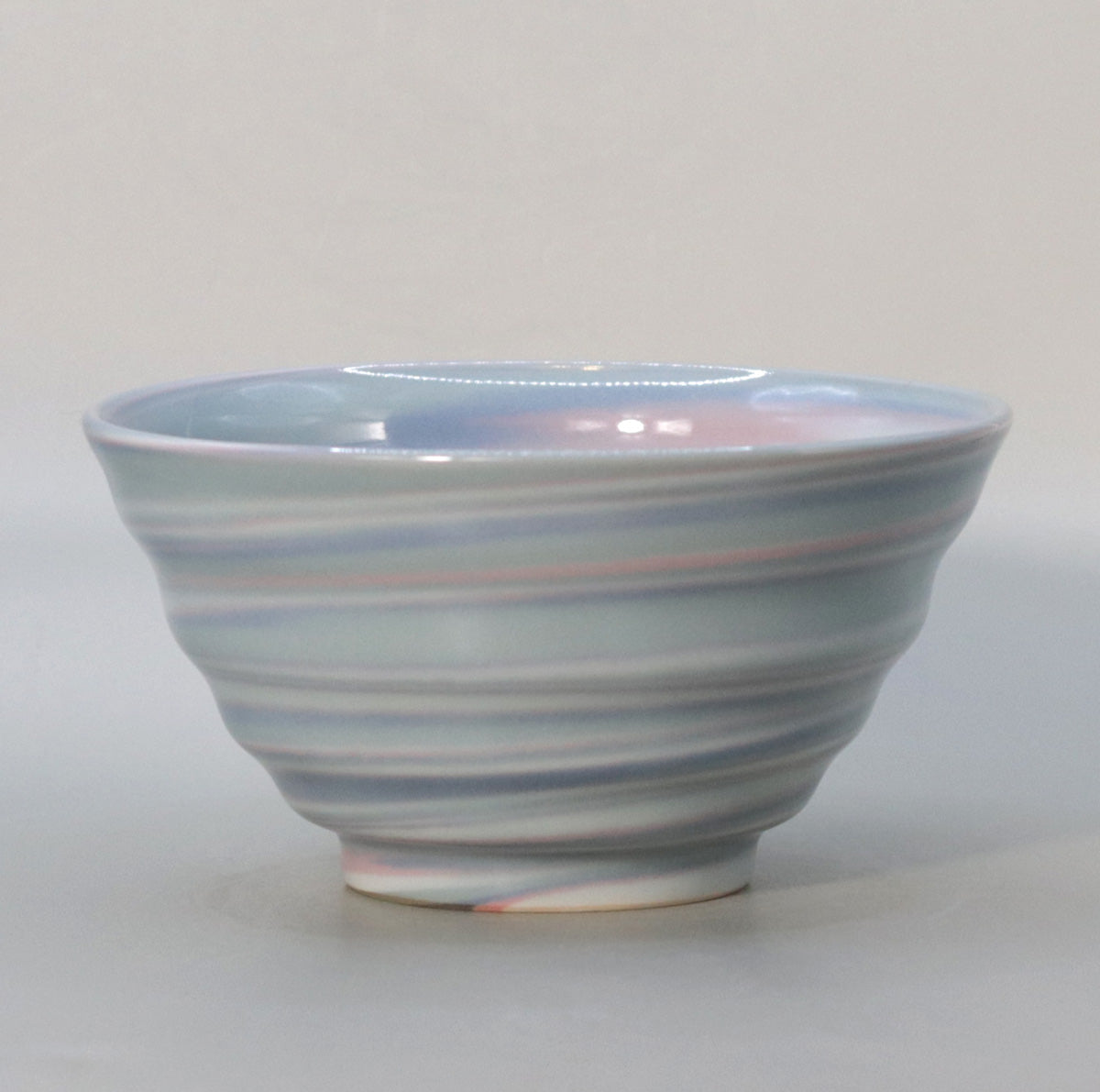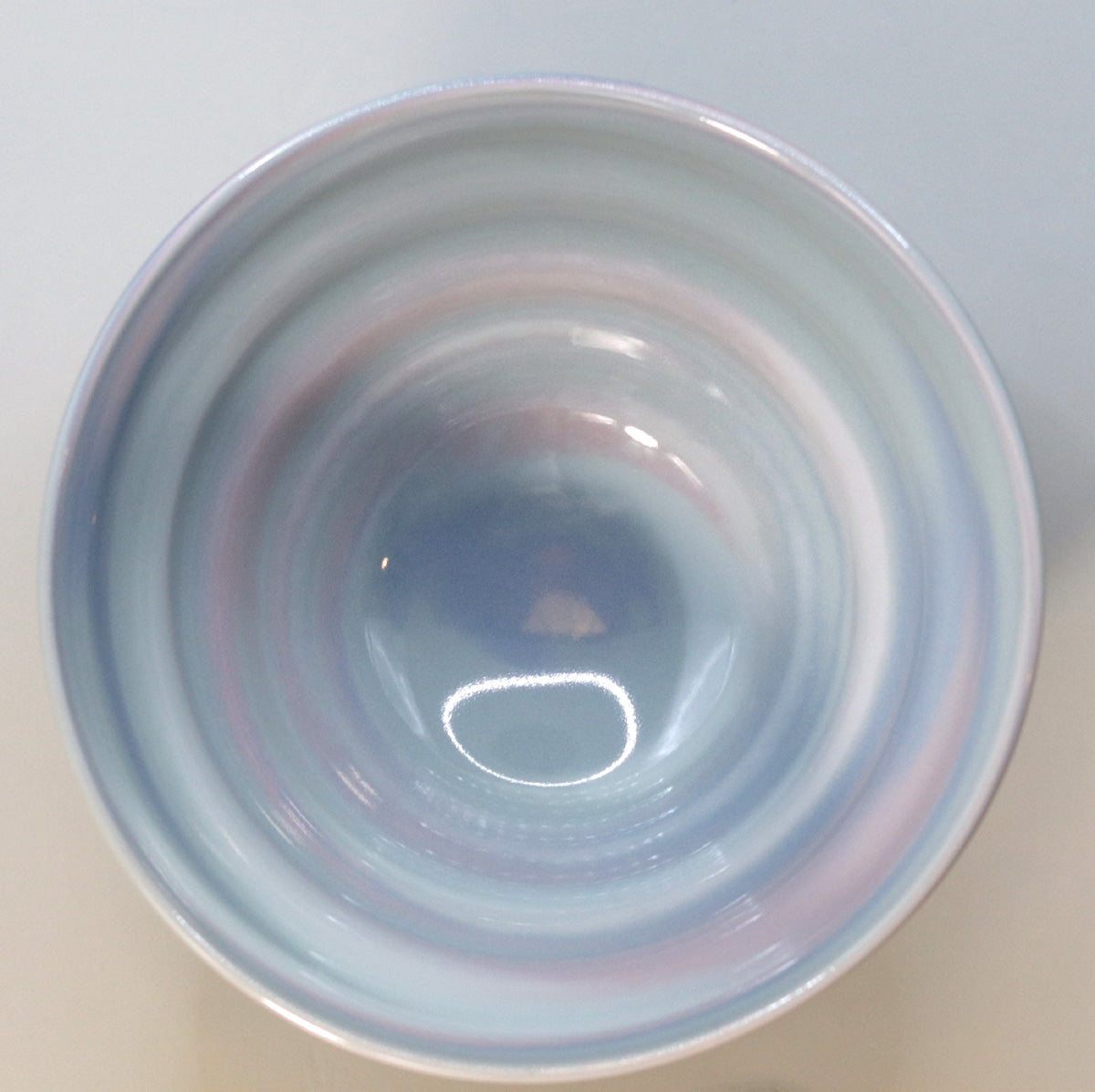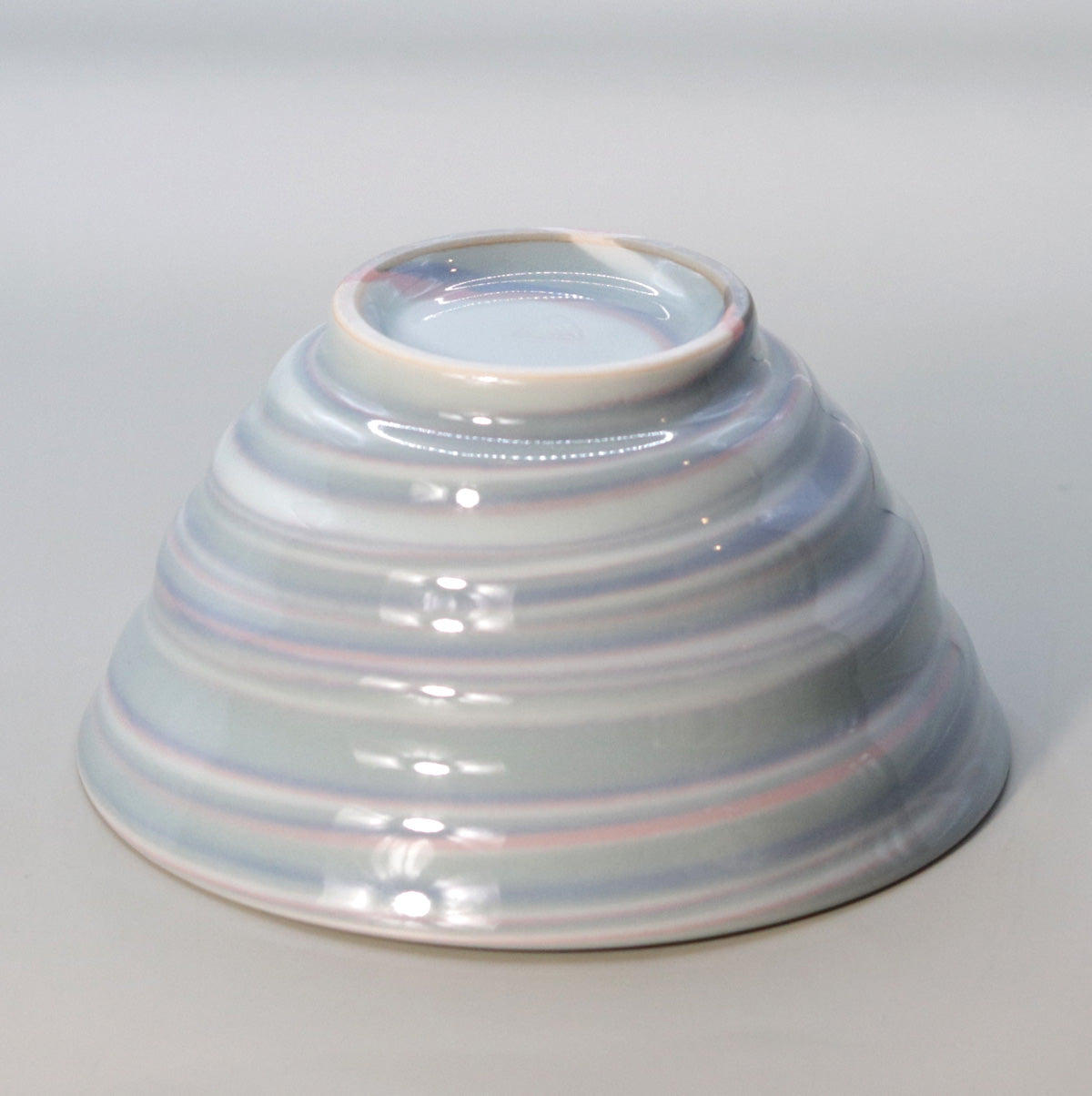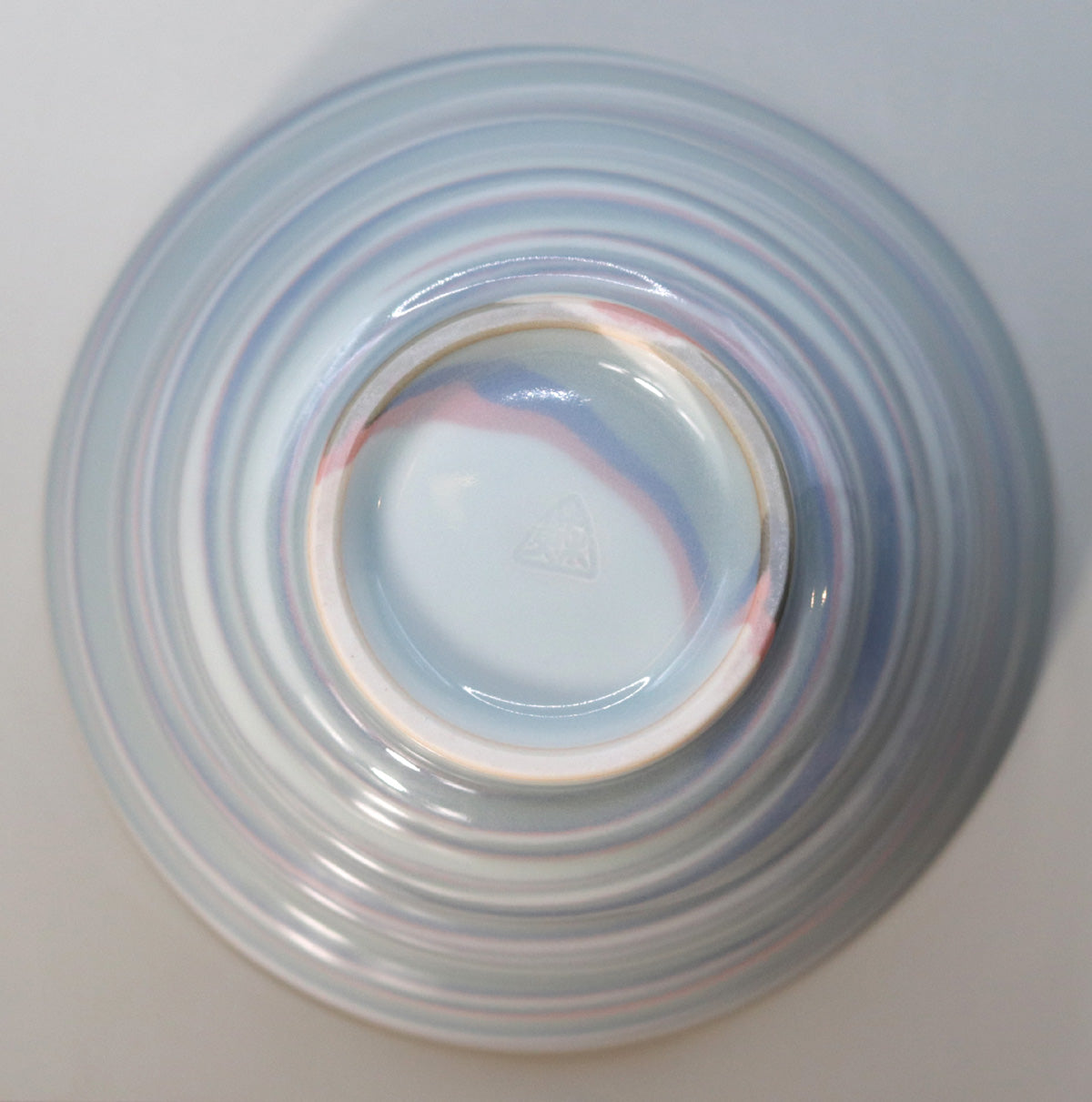Blue porcelain twisted star birth tea bowl Suwa Sozan
Blue porcelain twisted star birth tea bowl Suwa Sozan
Couldn't load pickup availability
Width: 13.0cm Height: 7.0cm
I. Work summary
This piece, "Kneaded Celadon Twisted Star Birth Tea Bowl," is made by layering the four colors of porcelain clay - white porcelain, celadon, indigo blue porcelain, and red porcelain - in one go on a potter's wheel, and then twisting the body of the bowl into a spiral shape while it is still soft - a rare two-step technique used in porcelain to create this matcha bowl. The pink glow that bursts out at the moment a new star is born from a distant nebula is visualized by the layer of kneaded red porcelain and the dynamic movement of the twisting, giving it the name "Star Birth."
II. Shape and form
The rhythm of the twisted body
The outer body is twisted clockwise while being tightened at equal intervals with fingers to form three tiered ridges. The layered stripes run diagonally, creating a three-dimensional undulating galactic vortex.
Curved rim
The rim is slightly curved outwards so as not to interfere with the use of the tea whisk. The crimson layer around the rim suggests the flash of a new star in the night sky.
Shallow prospect and elevated ground
The opening is shallow, and the kneaded and twisted spirals gently converge toward the bottom. The base is carved low and flares outward slightly to make it fit comfortably in the palm of your hand. The crimson layer peeking out from the side of the base suggests the heat of the birth of the star.
III. The Nerikomi x Nenuki technique and glaze tones - Layers and spirals that embrace nebulae
Layered structure of four-colored porcelain clay <br data-start="634" data-end="637">White porcelain, celadon, blue porcelain, and red porcelain are rolled out in that order into plates, then stacked dozens of times and rolled into a cylinder, which is then shaped on a potter's wheel as a core of clay. As the clay rotates, the layers form stripes, and by twisting and distorting diagonally, a three-dimensional vortex is created that cannot be achieved on a flat surface.
A veil of transparent celadon glaze <br data-start="755" data-end="758">After shaping, the entire surface is covered with a highly transparent celadon glaze and then reduced firing is performed. The glaze layer acts as a glassy membrane that envelops the internal layered pattern and reflects light to give it a sense of great depth. The celadon layer represents the depths of space, the crimson layer represents the flash of a nova, and the celadon layer gives the whole piece clarity.
The feel of the glaze surface <br data-start="891" data-end="894">The glaze surface is smooth and smooth, and feels as if it clings to your fingertips. While you enjoy the visual swirls and layers, the tranquility of the texture soothes the mind through the palm of your hand.
Ⅳ. Functional beauty and arrangement at tea ceremonies
| season | Recommended main dessert | Synergistic effect with tea bowls |
|---|---|---|
| spring | Hanami dango and sakura mochi | The crimson layer resembles a floral mist, softly enhancing the pale pink of the confectionery. |
| summer | Young sweetfish and kudzu manju | The celadon and blue porcelain layers emphasize the cool feeling, reflecting the refreshing feel of the transparent confectionery. |
| autumn | Tsukimi dango and purple sweet potato yokan | The blue magnetic layer deepens the night sky, while the crimson magnetic layer suggests the light of the rising moon. |
| winter | Yukihira and Camellia Mochi | The white porcelain layers evoke a snowy landscape, while the green of the matcha accentuates the signs of life. |
Harmony with Matcha <br data-start="1278" data-end="1281">The vivid green of the matcha emerges in the spiral layers, creating a visual effect as if the "core of the universe" has been born inside the bowl.
Lighting Effects <br data-start="1350" data-end="1353">When lit by warm light from lanterns or candles, the crimson layer glows faintly, while the blue layer accentuates the depth of the starry sky. The mysterious scenery is particularly striking at night.
V. Technical and historical significance
The rarity of twisted threads
Nejiku is originally a technique for twisting the body of a potter's wheel while it is still soft, creating wavy ridges, and is suitable for clay with high plasticity. There are very few successful examples of this technique with porcelain clay, and advanced humidity control and finger pressure control are essential to twist the kneaded layer evenly without destroying it.
The development of Nerikomi Celadon
Based on the monochromatic celadon of the first Suwa Sozan , the fourth generation introduced dynamic expression through multi-layering and twisting. The Seitan series is positioned as a new phase in modern celadon, combining the serenity of celadon with cosmic dynamism.
The challenge of red porcelain coloring
The pink color of the crimson layer is caused by copper. It is difficult to stabilize in reduction firing, and has the disadvantage that the color easily fades if the layer is thin. In this work, the amount of copper is kept to a minimum to achieve a pale, soft pink color.
Ⅵ. Artist profile and creative approach
The 4th Suwa Sozan (born in Kyoto in 1970) was trained by the 3rd Suwa Sozan and the 12th Nakamura Sotetsu, a lacquer artist, and took over the name in 2002. With a focus on celadon research, he makes full use of a variety of techniques such as Hotarude, Tobiseiji, and Nerikomi Celadon, and upholds the philosophy that "a piece should have a story and be completed in harmony with the user's heart." This tea bowl is imbued with the desire to convey the breath of the universe to the moment of tea ceremony, entrusting the "dynamic movement of the moment when a new star is born from a nebula" to the spiral of the twisted thread.
VII. Conclusion
The "Kneaded Celadon Twisted Star-Birth Tea Bowl" is a masterpiece that embraces the depth of indigo and flashes of crimson within the serenity of jade, and further creates a three-dimensional nebula vortex with a twisted spiral. When matcha is poured into it, the green light blends into the star-birth vortex, inviting the infinite universe into the tea ceremony. This work, which crystallizes the outstanding technique and poetic sensibility of the 4th generation Suwa Sozan , envelops the venue with dignity and dynamism rather than luxury, and will surely evoke new hope and the birth of stars in the hearts of those who see it.
Share
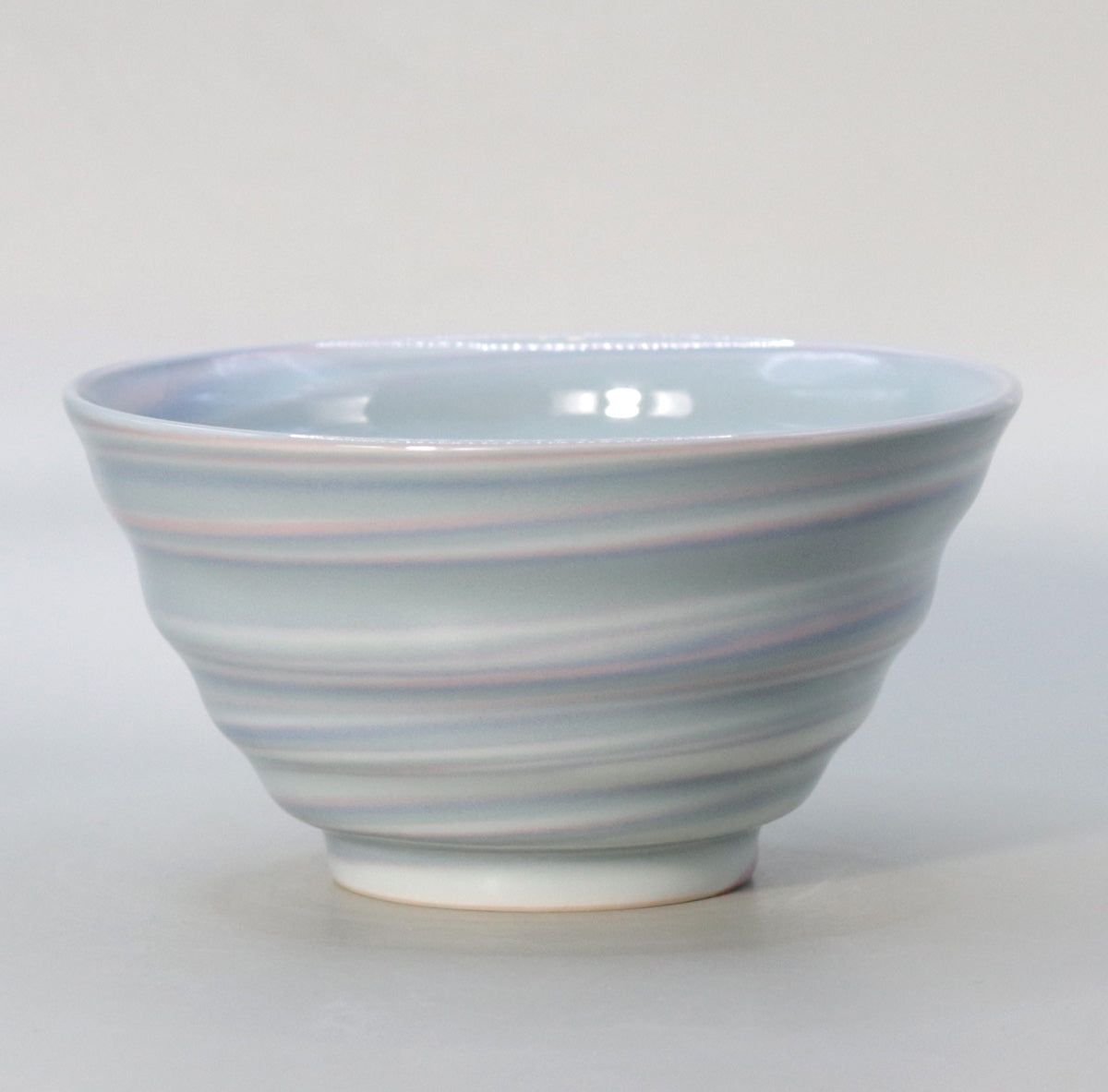

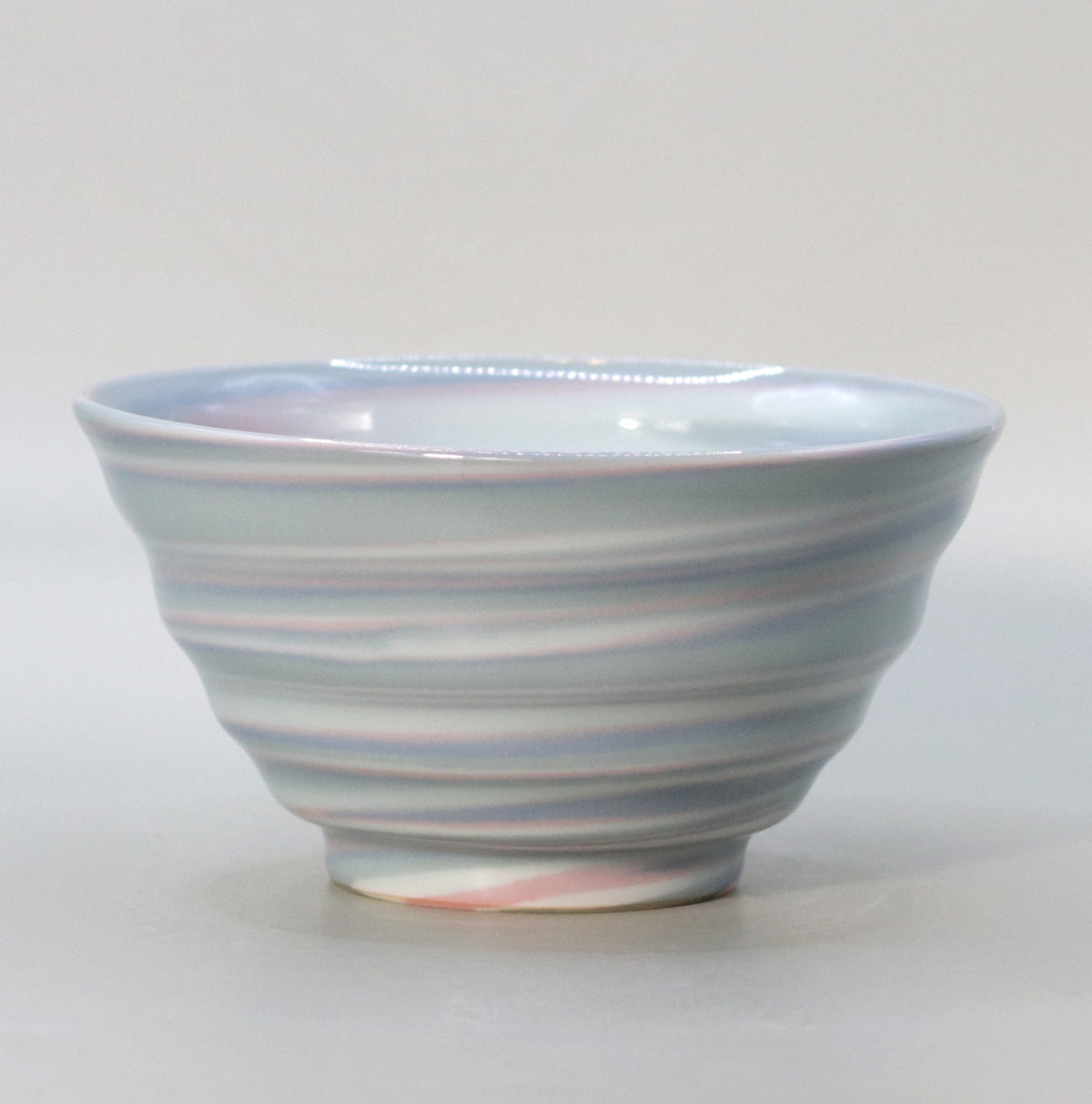
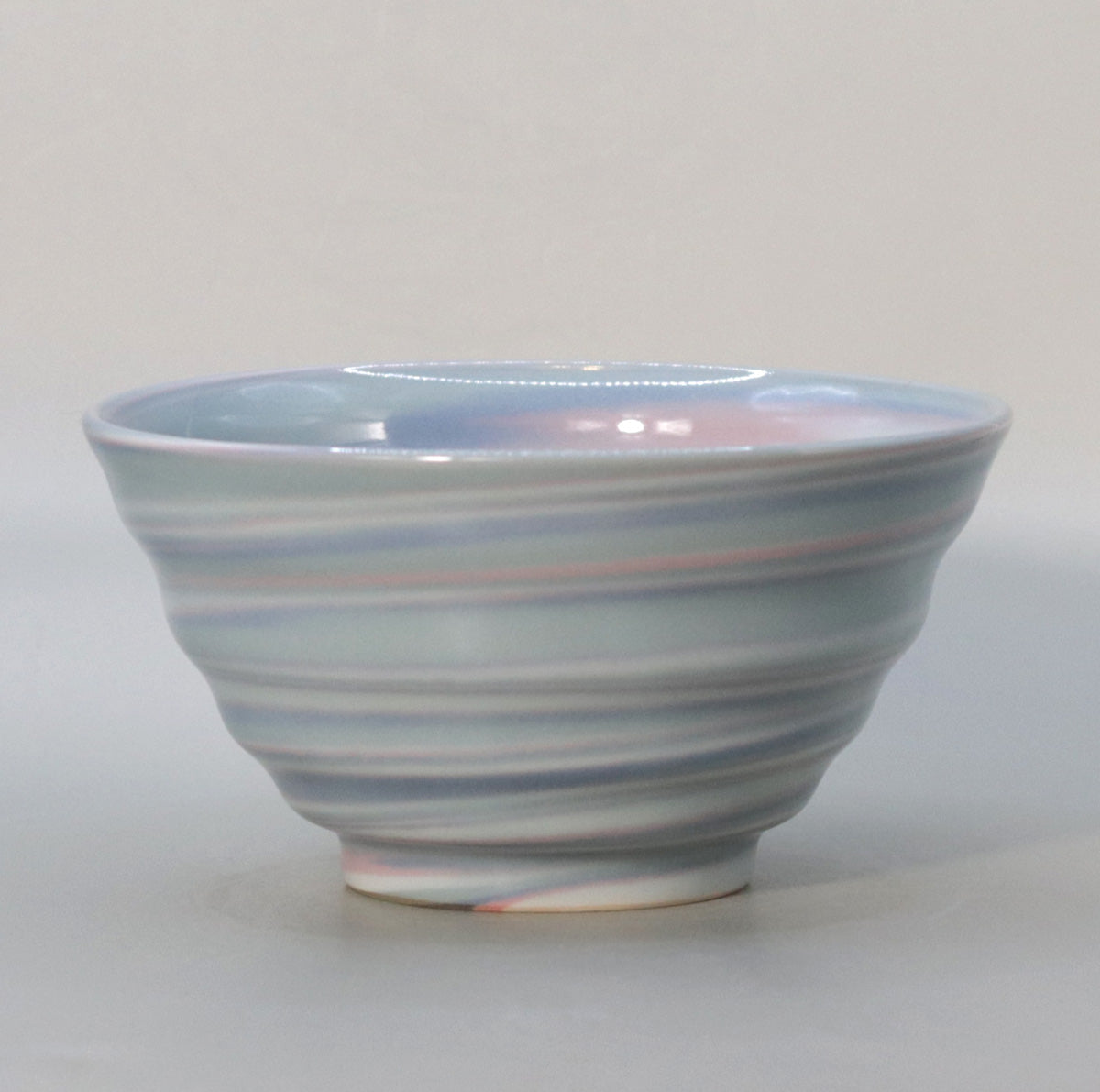
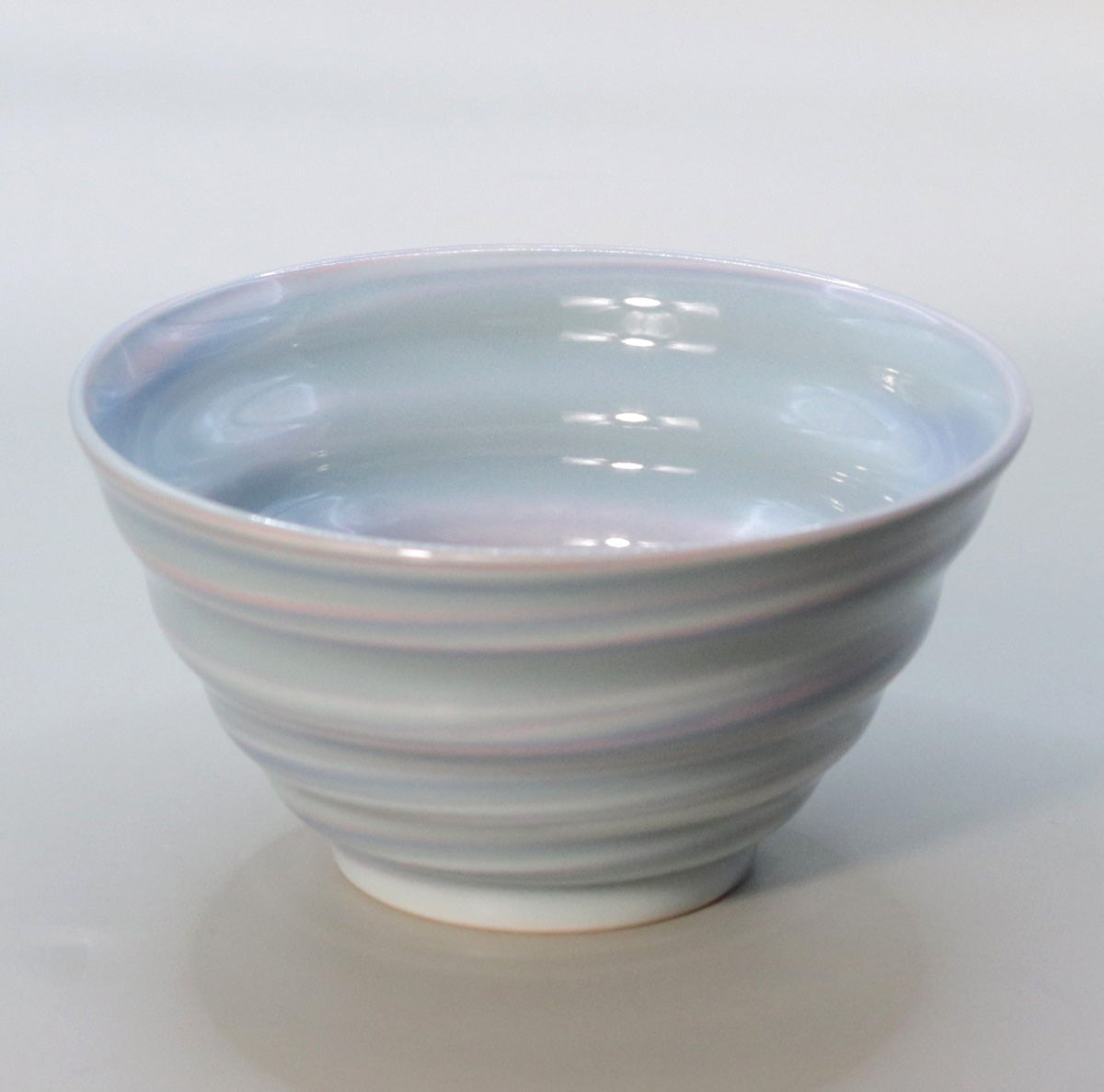
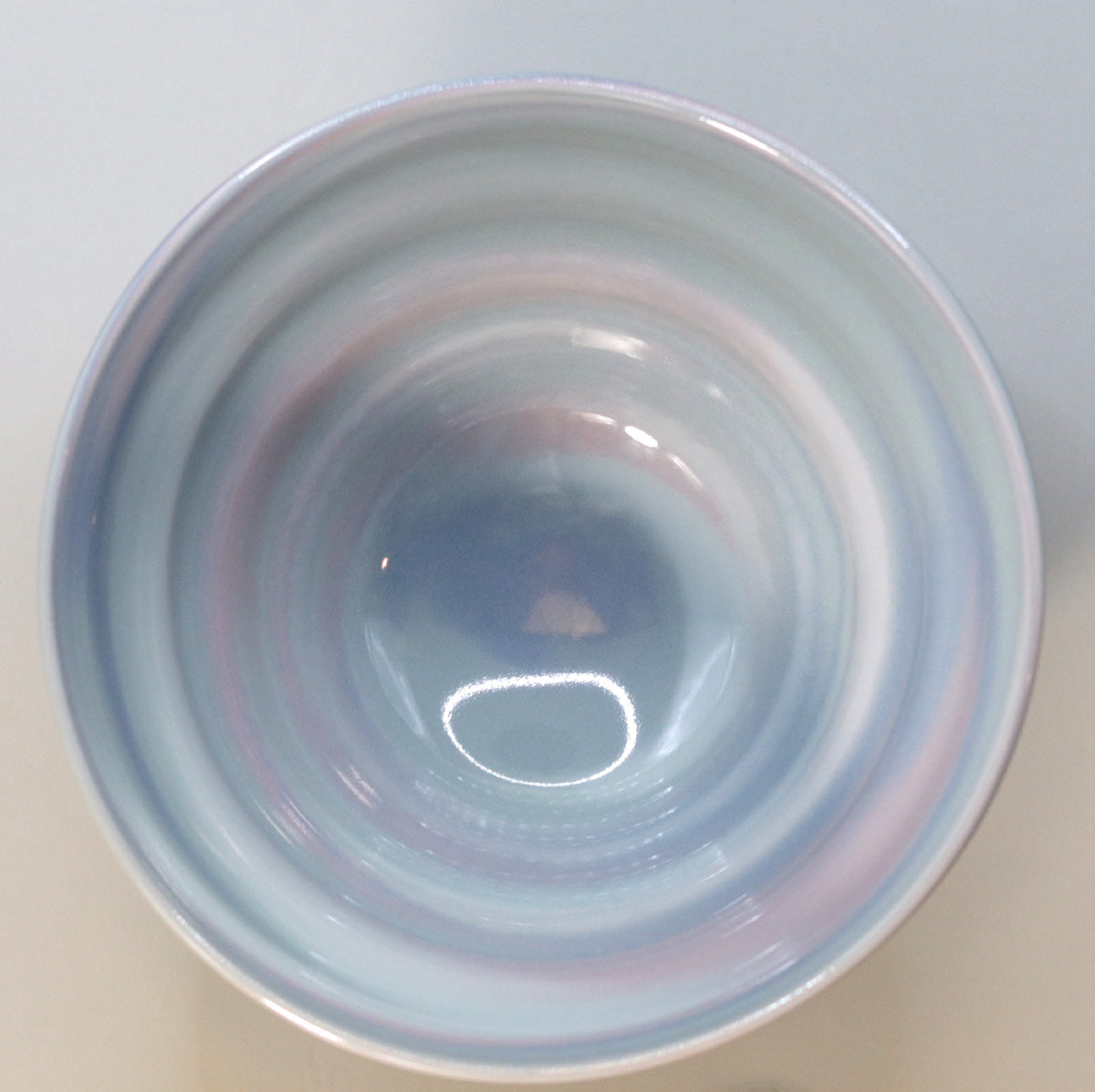

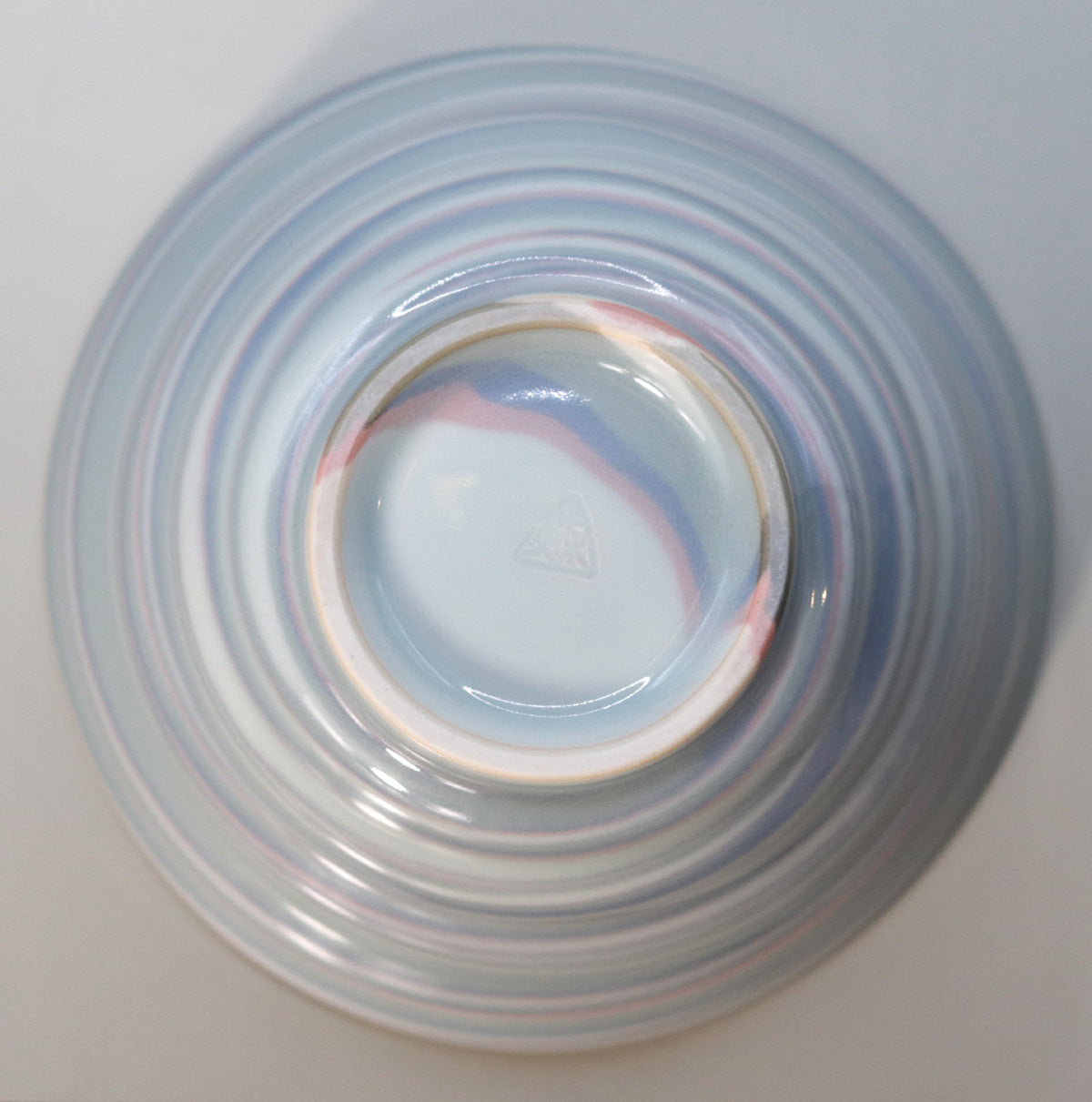
Multi-Column
-
[I will send it to you quickly and carefully]
We carefully package each product in a way that suits it best.
Also, delivery times vary depending on the piece (vessel, etc.).
Items that already come with a box will be shipped within 1-3 days of the order date.
For items that require a box to be made after your order, it will take approximately 30 days for production to be completed and then shipped.
In either case, once we have confirmed your order, we will contact you by email to inform you of the delivery date.
-
[Requests when purchasing pottery]
Even products that look the same may differ slightly in color, shape, size, etc.
The way the glaze is used, the power of the kiln, the firing method, the season, and the humidity also affect the appearance of the pottery.
Please understand the individuality of each piece of pottery and enjoy the unique warmth of handmade.

